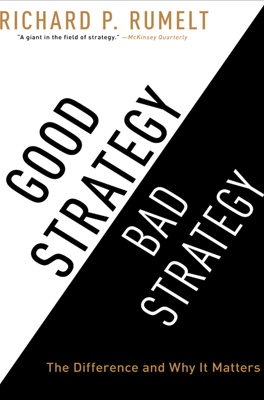The Science of Strategy
The Foundation of Good Strategy: Empirical Evidence and Scientific Approach
Strategy and Science as Hypotheses and Experiments
Good strategy is likened to a scientific process where hypotheses are formed based on the best available knowledge, and then tested through implementation as experiments. This approach contrasts with seeking guaranteed solutions, highlighting that strategic success involves navigating uncertainties and learning from outcomes.
- Managers in technically oriented fields often struggle with the concept of strategy because it lacks the definitive clarity of engineering or physics. However, embracing strategy as a form of hypothesis-driven experimentation can bridge this gap.
- Strategies should be considered educated guesses that direct organizational actions towards exploiting opportunities and managing risks, bearing similarities to how scientists formulate and test hypotheses.
Impact of Enlightenment on Scientific and Strategic Thinking
The historical context of the Enlightenment brought about a profound shift towards empirical science, emphasizing observation and experimentation over dogmatic adherence to established norms. This shift mirrors a strategic approach that relies on empirical validation rather than merely intuitive or conventional choices.
- The story of Galileo and the subsequent intellectual shifts underline the importance of factual evidence and firsthand observation in forming theories and strategies.
- Just as the Enlightenment empowered thinkers to challenge established ideas with new theories based on observations, good strategists must base decisions on a blend of known facts and innovative, data-driven insights.
Strategy as Continuous Adaptation and Learning
Effective strategy involves continuous refinement and adaptation, akin to the scientific method, which revolves around evolving hypotheses in response to new empirical data. This iterative learning process is crucial to maintaining relevance and effectiveness in changing environments.
Anomalies or deviations from expected outcomes serve as opportunities for new learning and strategic insights. Successful strategies often emerge from recognizing and investigating these anomalies rather than disregarding them.
Illustrated by the rise of Starbucks, an anomaly in consumer behavior in Italy led Howard Schultz to hypothesize that a similar coffee culture could thrive in the U.S. This strategy required substantial adaptation as he learned from each implementation phase, gradually adjusting his approach to align with American consumer preferences and market conditions.
Privileged Information and Proprietary Insights
A key advantage in strategy formulation is developing proprietary knowledge—that is, insights unique to an organization obtained through direct business operations and market interactions.
As companies engage with their strategies, they gain specialized knowledge that is not accessible to competitors. This proprietary information becomes a strategic asset, enabling more targeted and effective adaptations.
The case of Starbucks exemplifies how a company can build a successful strategy by continually refining its operations based on direct customer feedback and specific operational data, which are forms of privileged information.
Integration and Adaptation in Competitive Strategy
The necessity for internal integration and the capability to adapt swiftly are underscored as critical components of successful strategic execution, particularly when entering new markets or innovating within existing ones.
- Starbucks’ success was partly due to its vertical integration, which allowed effective coordination across its value chain—from coffee roasting to retail experience—enabling the company to rapidly iterate and refine its market strategy.
In essence, strategy in business, much like hypotheses in science, is fundamentally about formulating educated guesses based on existing knowledge and continuously refining these guesses in light of new data and empirical evidence. The process involves embracing uncertainty and learning from the outcomes of strategic initiatives, leveraging proprietary insights, and ensuring internal coherence in the execution of strategy.
